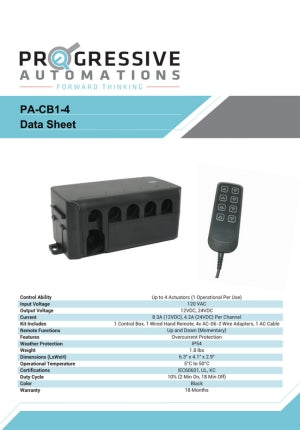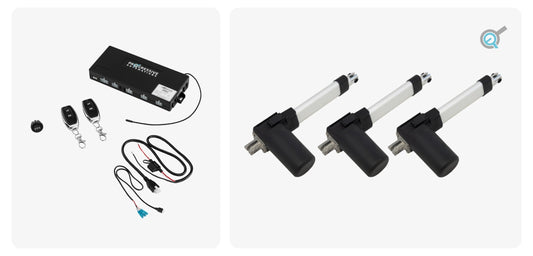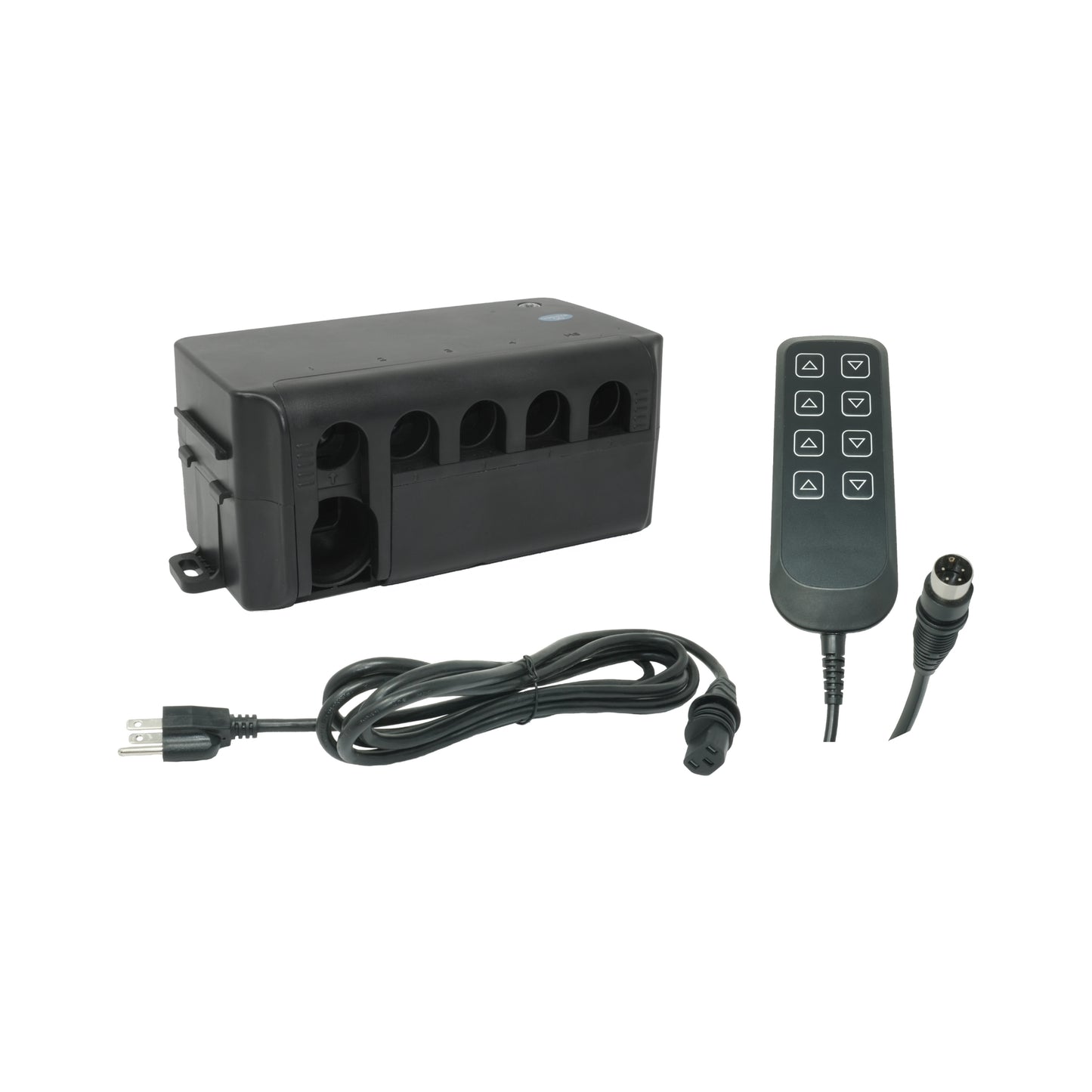
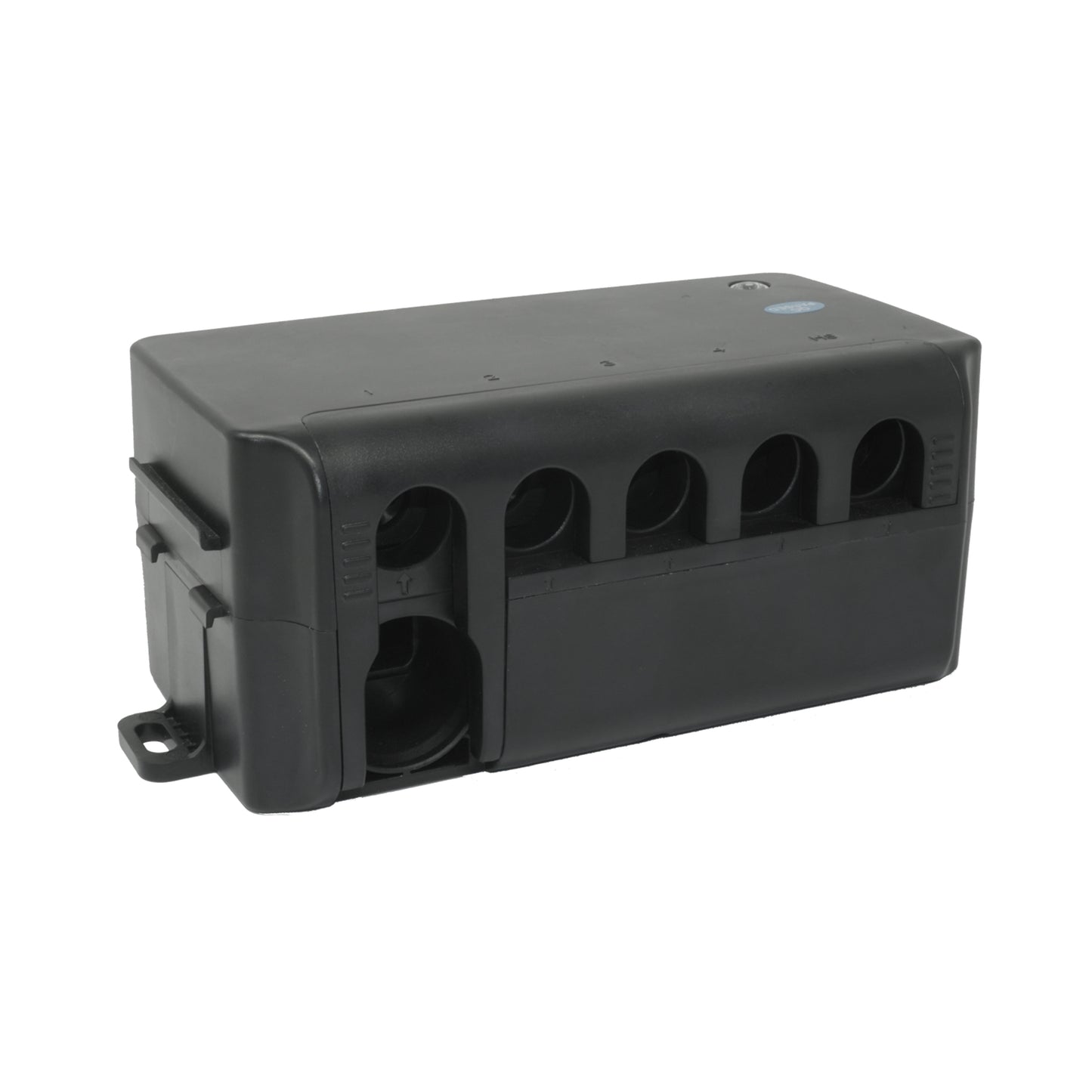
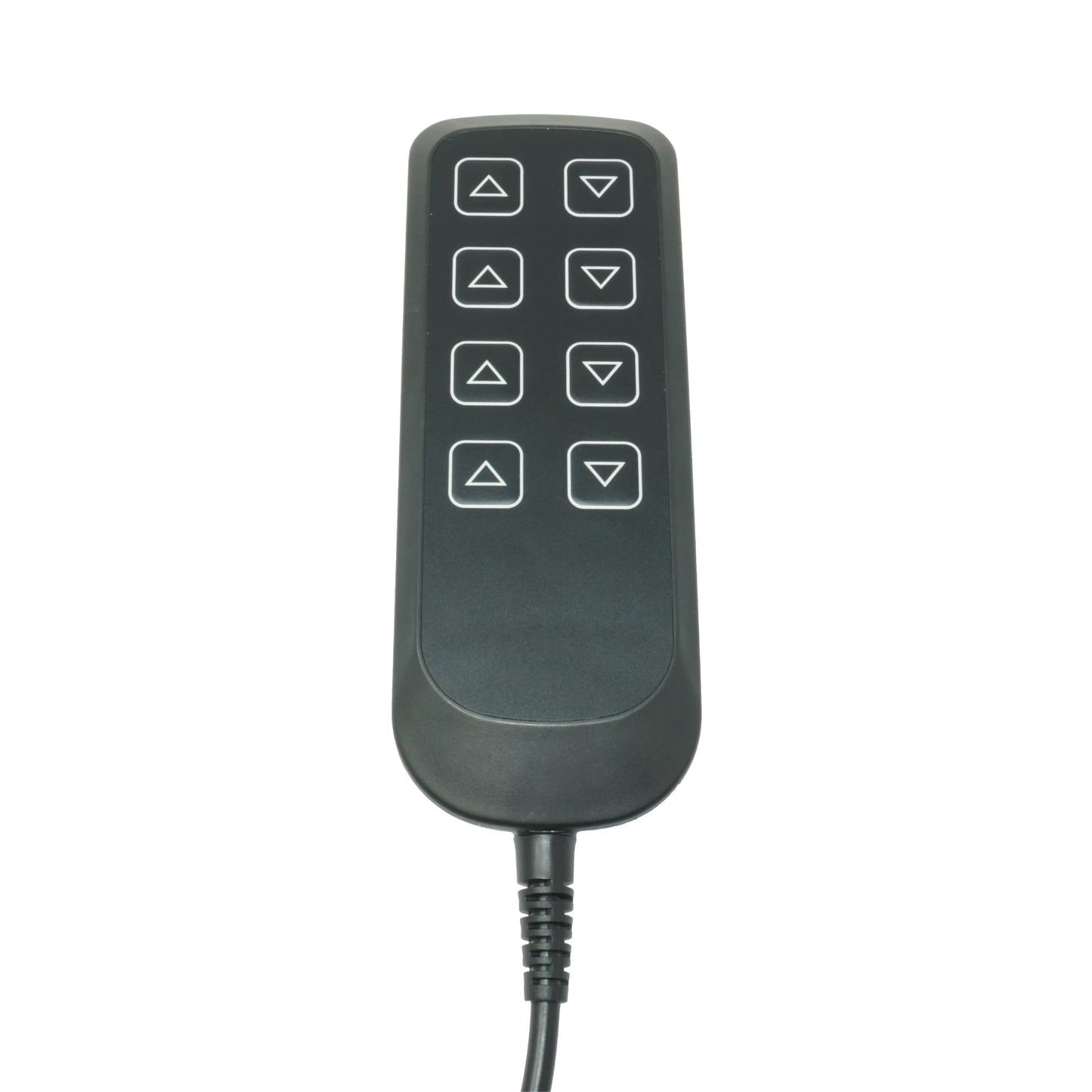
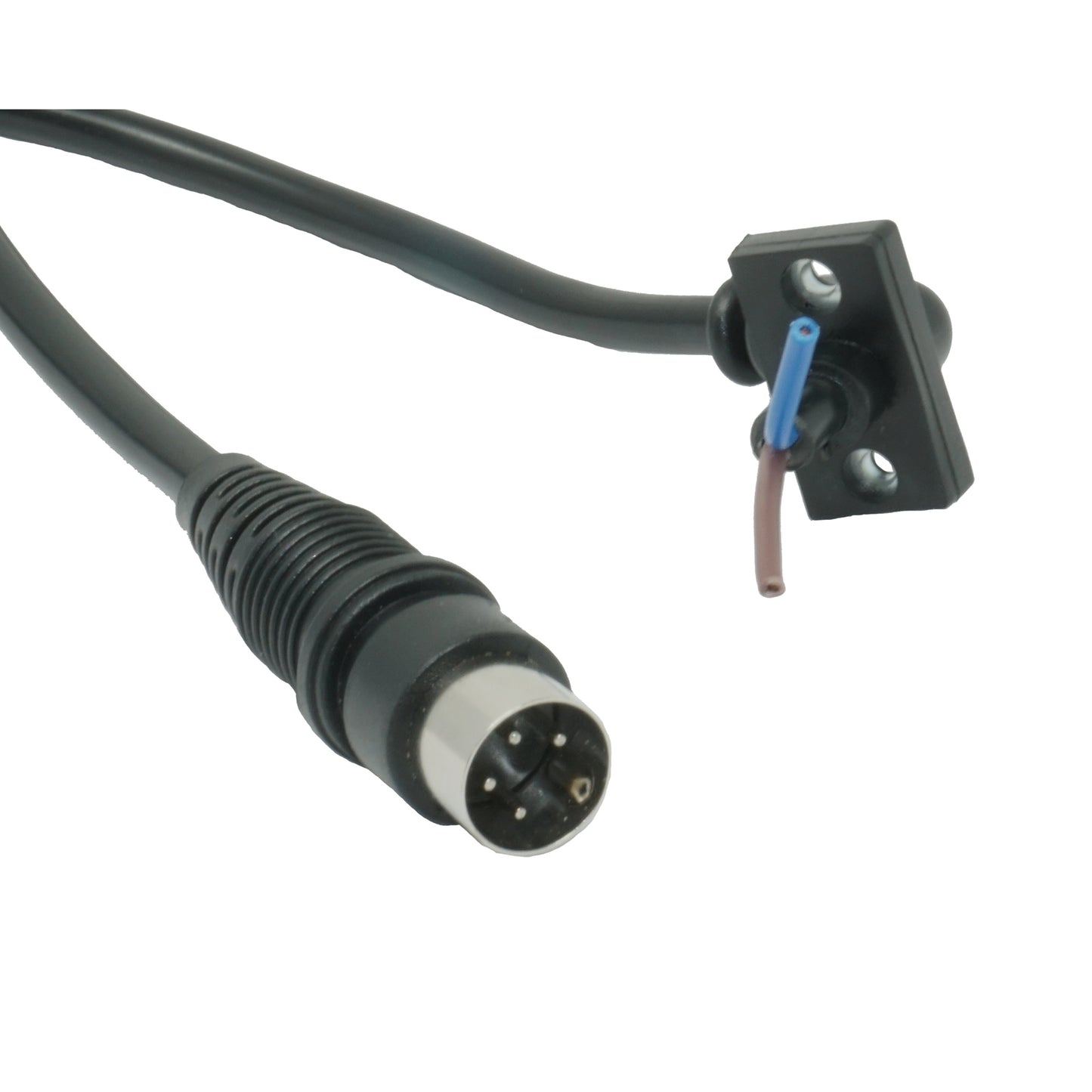
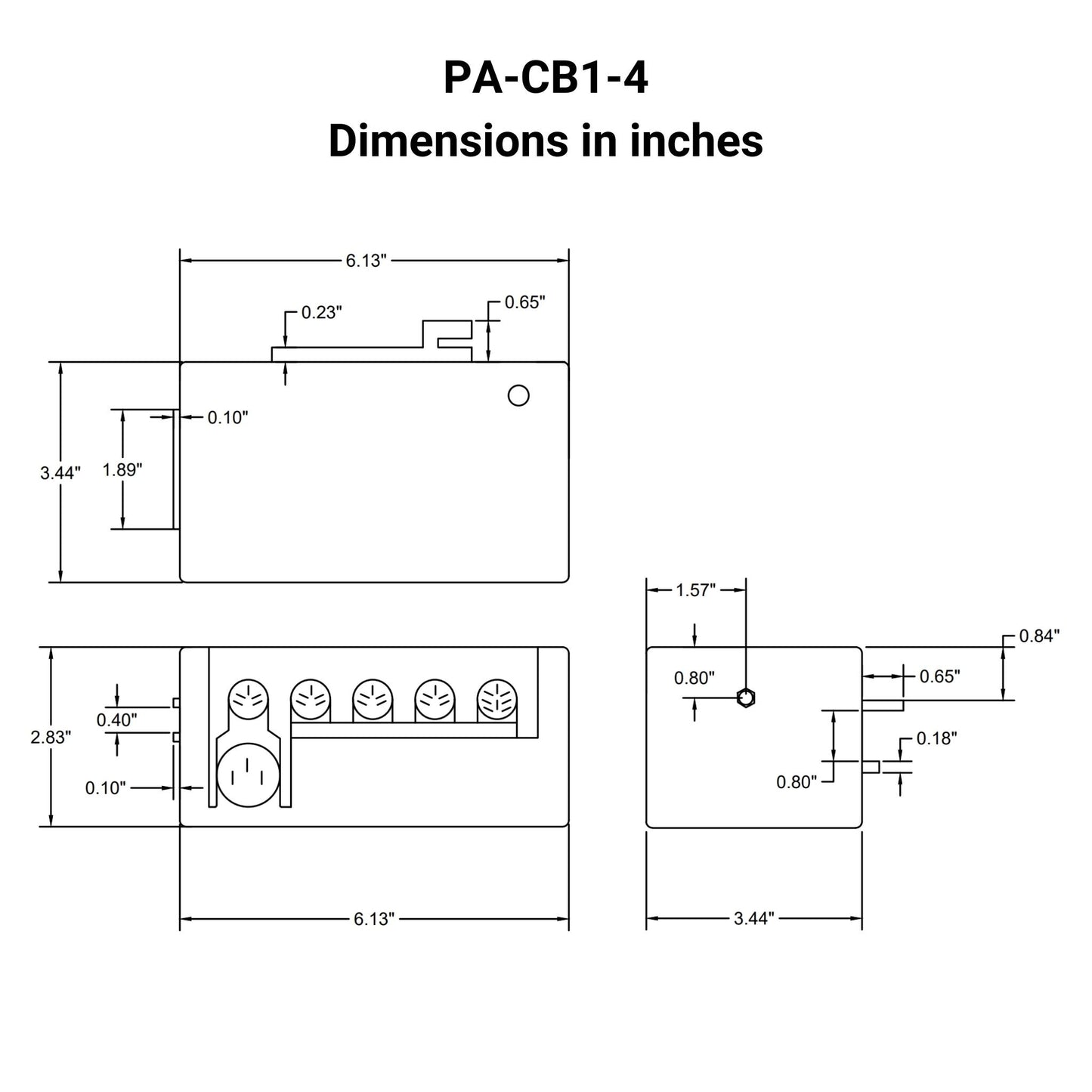


The PA-CB1-4 is a four-channel control box that is a plug-and-play solution to individually control up to 4 actuators on a single remote. Featuring an AC input voltage, an additional power supply is not needed to control your 12/24 VDC linear actuators. Mount the control box to your application by using the mounting holes on either side of the control box. Equipped with overcurrent protection that triggers when any channel exceeds 11A.
This control box set comes with a detachable wire lock to prevent wire disconnections, 4x AC-06-2 actuator cables, an AC adapter, and a large hand remote complete with a coiled cable and a handle that helps provides a secure grip as well as keeping the cable well organized.
This control box allows for momentary up/down controls.
* Only compatible with 12 VDC (24VDC) brushed DC motors. Individually controls up to 4 Actuators. (1 Operational Per Use).
The PA-CB1-4 is a four-channel control box that is a plug-and-play solution to individually control up to 4 actuators on a single remote. Featuring an AC input voltage, an additional power supply is not needed to control your 12/24 VDC linear actuators. Mount the control box to your application by using the mounting holes on either side of the control box. Equipped with overcurrent protection that triggers when any channel exceeds 11A.
This control box set comes with a detachable wire lock to prevent wire disconnections, 4x AC-06-2 actuator cables, an AC adapter, and a large hand remote complete with a coiled cable and a handle that helps provides a secure grip as well as keeping the cable well organized.
This control box allows for momentary up/down controls.
* Only compatible with 12 VDC (24VDC) brushed DC motors. Individually controls up to 4 Actuators. (1 Operational Per Use).
Following a set of standards is crucial for businesses to ensure their products and services can meet a level of quality that promotes customer satisfaction. At Progressive Automations, we aim for nothing but the best for our customers and strive toward continual improvements. Because of this, we are excited to announce that Progressive Automations is now ISO 9001:2015 certified!
Quality Assured






